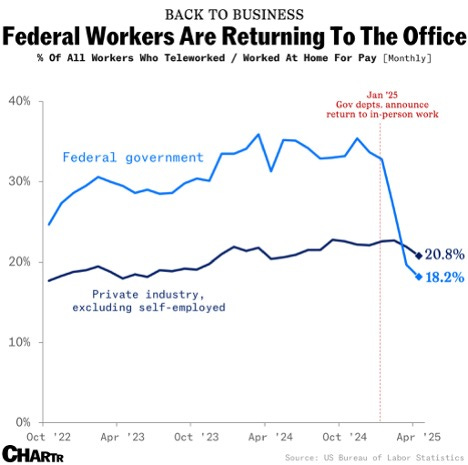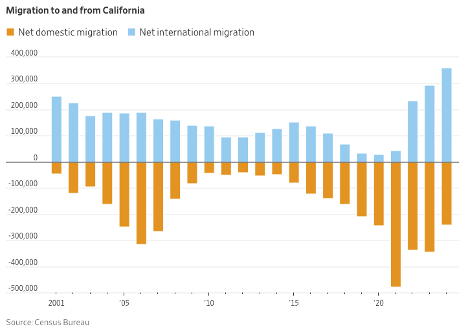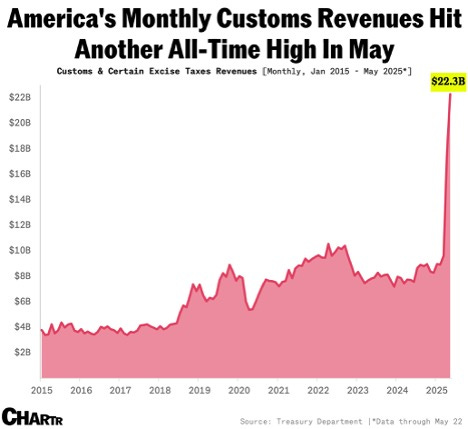1. Behind the Curtain: A white-collar bloodbath
Dario Amodei — CEO of Anthropic, one of the world's most powerful creators of artificial intelligence — has a blunt, scary warning for the U.S. government and all of us:
AI could wipe out half of all entry-level white-collar jobs — and spike unemployment to 10-20% in the next one to five years, Amodei told us in an interview from his San Francisco office.
Amodei said AI companies and government need to stop "sugar-coating" what's coming: the possible mass elimination of jobs across technology, finance, law, consulting and other white-collar professions, especially entry-level gigs.
Why it matters: Amodei, 42, who's building the very technology he predicts could reorder society overnight, said he's speaking out in hopes of jarring government and fellow AI companies into preparing — and protecting — the nation.
2. North Korea Infiltrates U.S. Remote Jobs—With the Help of Everyday Americans
Christina Chapman looked the part of an everyday American trying to make a name for herself in hustle culture.
In prolific posts on her TikTok account, which grew to more than 100,000 followers, she talked about her busy life working from home with clients in the computer business and the fantasy book she had started writing. She posted about liberal political causes, her meals and her travels to see her favorite Japanese pop band.
Yet in reality the 50-year-old was the operator of a “laptop farm,” filling her home with computers that allowed North Koreans to take jobs as U.S. tech workers and illegally collect $17.1 million in paychecks from more than 300 American companies, according to federal prosecutors.
In a June 2023 video, she said she didn’t have time to make her own breakfast that morning—“my clients are going crazy,” she said. Then she describes the açaí bowl and piña colada smoothie she bought. As she talks, at least 10 open laptops are visible on the racks behind her, their fans audibly whirring, with more off to the side.
In 2023, Christina Chapman posted a TikTok that had racks of laptops visible in the background. The Wall Street Journal highlighted the laptops in this clip of the video.
Chapman was one of an estimated several dozen “laptop farmers” that have popped up across the U.S. as part of a scam to infiltrate American companies and earn money for cash-strapped North Korea. People like Chapman typically operate dozens of laptops meant to be used by legitimate remote workers living in the U.S.
What the employers—and often the farmers themselves—don’t realize is that the workers are North Koreans living abroad but using stolen U.S. identities. Once they get a job, they coordinate with someone like Chapman who can provide some American cover—accepting deliveries of the computer, setting up the online connections and helping facilitate paychecks. Meanwhile the North Koreans log into the laptops from overseas every day through remote-access software.
Chapman fell into her role after she got a request on LinkedIn to “be the U.S. face” for a company that got jobs for overseas IT workers, according to court documents. There’s no indication that she knew she was working with North Koreans.
Late last year, Ryan Goldberg, an incident response manager at cybersecurity company Sygnia, got a look at a laptop that was returned to a client—a life-sciences company—after the FBI raided an East Coast laptop farm.
As the MacBook booted up, he was amazed by what he saw: a series of seven custom-written programs designed to get around antivirus software and firewalls, giving the North Koreans a virtually undetectable back door into the corporate network.
One program allowed them to spy on Zoom meetings. Others could be used to download sensitive data without being detected. “The way they were employing remote control was something we’d never seen before,” said Goldberg. “They really thought outside of the box on this.”
3. Federal Workers Are Returning To The Office
Analysis from the Bureau of Labor Statistics, published Friday, revealed that less than 1 in 5 (~18%) federal government workers spent time teleworking or working at home for pay in April, down from ~31% in the same month last year.
4. Immigration Is the Only Thing Propping Up California’s Population
California is growing again because of immigrants like Dhanakeerthi. The state’s population rose 0.6% in 2024, reaching 39.43 million by adding almost a quarter-million people, according to Census Bureau estimates. State leaders say California’s growth belies the narrative that it is in permanent decline. Democratic Gov. Gavin Newsom, often seen as a potential presidential contender, is publicly touting the population bump.
Yet California’s growth is tenuous. Without immigration, it would have shrunk significantly in the past year. Net immigration rebounded to more than 300,000 people in 2024, after plunging to as few as 44,000 in the worst year of the pandemic.
How President Trump’s immigration policies will affect this growth remains a crucial question.
Migrant crossings along the California-Mexico border have nearly ceased. But California attracts immigrants from all over the world. Since 2010, the state has added 2.7 million immigrants, according to the Census Bureau’s American Community Survey. Fully half have come from Asia, and slightly more than a third from Latin America.
5. America’s Monthly Customs Revenues Hit Another All-Time High in May
US has collected ~$40 billion worth of customs duties since April, but with the US Court of International Trade blocking the majority of President Trump’s tariffs, the government may end up returning the money.
After raking in a record $15.6 billion in customs revenue in April, the Treasury hit a new all-time high again this month, likely from Trump’s 10% baseline tariffs on nearly all imports, with some $22 billion accumulated so far in May. That’s a massive jump from $9 billion back in January, and is likely lower than reality, as the customs-only figure excludes excise taxes on specific imported goods like fuel, alcohol, and tobacco.
6. NYC sees fewest reported murders, shootings in modern history to start year: mayor
New York City has recorded the lowest number of murders and shootings in modern history through the first five months of the year, Mayor Eric Adams announced Sunday.
There were 112 homicides from January through May, one fewer than the 113 recorded in 2014 and 2017, the previous records for the same time period, according to NYPD data obtained by The Post. There were 18 murders reported for the month of May, one fewer than the previous low of 19 recorded in May 2019. Meanwhile, there were 264 shootings for the five months of 2025, three less than the 267 recorded in 2018.
7. The CIA Secretly Ran a Star Wars Fan Site
The site looks like an ordinary Star Wars fan website from around 2010. But starwarsweb.net was actually a tool built by the Central Intelligence Agency (CIA) to covertly communicate with its informants in other countries, according to an amateur security researcher. The site was part of a network of CIA sites that were first discovered by Iranian authorities more than ten years ago before leading to a wave of deaths of CIA sources in China in the early 2010s.
In November 2018, Yahoo News published a blockbuster investigation into the CIA’s covert communication channels and how they were exposed. That exposure originated in Iran before more than two dozen CIA sources died in China in 2011 and 2012, according to the report. The CIA ultimately shut down the covert communications tool.
In September 2022, Reuters published its own investigation with the headline “America’s Throwaway Spies.” That article showed how, for example, a CIA informant in Iran called Gholamreza Hosseini was identified by Iranian authorities thanks to the CIA’s sloppily put together covert websites. One of the CIA’s mistakes was that the IP addresses pointing to the sites were sequential, meaning that after discovering one, it was straightforward for a researcher to find others very likely in the same network.
8. What the failure of a superstar student reveals about economics
Academic misconduct often triggers a reckoning. In 2015 political scientists grappled with the retraction of a well-publicised article that claimed door-to-door canvassers could lift support for gay marriage. More recently, behavioural science has come under scrutiny: Francesca Gino of Harvard University and Dan Ariely of Duke University have faced investigation over allegedly manipulated data (both deny wrongdoing). Economics has some protection owing to its record. The five leading journals have seen just four withdrawals in their combined 570-year history, according to Retraction Watch, a database.
But even if economics is not the worst offender, it is no stranger to social science’s replication crisis. Its biggest recent trend has been empirical research, with a focus on credible causal designs (see chart). Statistically significant results are prized, incentivising cherry-picking and selective presentation of results. Prashant Garg of Imperial College London and Thiemo Fetzer of the University of Warwick find that the share of papers reporting “null results” fell from 15% in 1980 to 9% in 2023. Use of private data doubled.
9. Targeting Chinese Students Threatens the Bottom Line at American Universities
American universities significantly increased their enrollment of Chinese students in the years following the 2008-09 financial crisis, when many suffered budget shortfalls. Typically, Chinese undergraduates pay full tuition, a critical source of revenue for universities.
One in every four international students comes from China, and Chinese students form a particularly large share of the student body at top U.S. schools. After they graduate, many assume key roles in U.S. science and engineering endeavors.
10. America Let Its Military-Industrial Might Wither. China’s Is Booming.
Adapting to the dual challenge of China’s military and its economy has been a focus of U.S. administrations for years. America is losing ground.
Modern warfare is a contest of industrial might, as Russia’s invasion of Ukraine has shown. Both sides are burning through arsenals of artillery shells, rockets and military vehicles. Automated factories now spit out drones day and night. Even an old-fashioned howitzer requires precision manufacturing.
The U.S. won World War II in part by producing more of everything—from bullets to food—than its enemies. One California shipyard in 1942 assembled a supply ship in less than five days. America is no longer capable of that kind of manufacturing feat.
Today, the country that can make the most of almost everything is China. Its products run the gamut from basic chemicals to advanced machinery. With tensions rising between the U.S. and China, the two countries’ industrial capacity is coming into focus as a key battleground in any conflict.
NOTE: Many, many informative charts in this article.
11. 1 of every 8 clothing items bought in America comes from... Amazon?
When you think of Amazon, you probably don’t think of clothing. You certainly don’t think of fashion. But the famed “everything store” has become just that — and “everything” includes clothing. Wells Fargo estimates that one out of every eight clothing items bought in the US comes from Amazon.
Even Jeff Bezos, Amazon’s founder and one of the richest men on the face of the Earth, seems into Amazon’s fits: He was virally panned for wearing what appeared to be a $12 butterfly print shirt from the e-commerce giant to Coachella in 2023.
Amazon sold an estimated $68 billion of apparel and footwear in the US in 2023, according to Ike Boruchow, an equity analyst at Wells Fargo. “This represents a highly impressive 13.2% share of all apparel sold in the U.S. and 41.4% share of all apparel sold online,” Boruchow wrote. Amazon’s control of the so-called “softlines” segment of the retail market is bigger than Walmart and TJ Maxx combined.
12. A Lightning Fast Ascent of Everest Is Rocking the Mountaineering World
Four men left London’s Heathrow Airport for Nepal on a May afternoon. Within five days, they were atop Mount Everest, the 29,000-foot peak where an ascent typically takes weeks of acclimatization and bursts of climbing punctuated by rest.
Instead, the four British army veterans prepared for the world’s highest peak using a new pre-acclimatization regime involving inhaling xenon gas—once used as an anesthetic but now more commonly found in rocket propellant.
Their ascent is rocking the mountaineering community and Nepali authorities, with their use of a substance banned from competitive sport by the World Anti-Doping Agency provoking the criticism this amounts to cheating.
Enjoy your week!
The Curator












